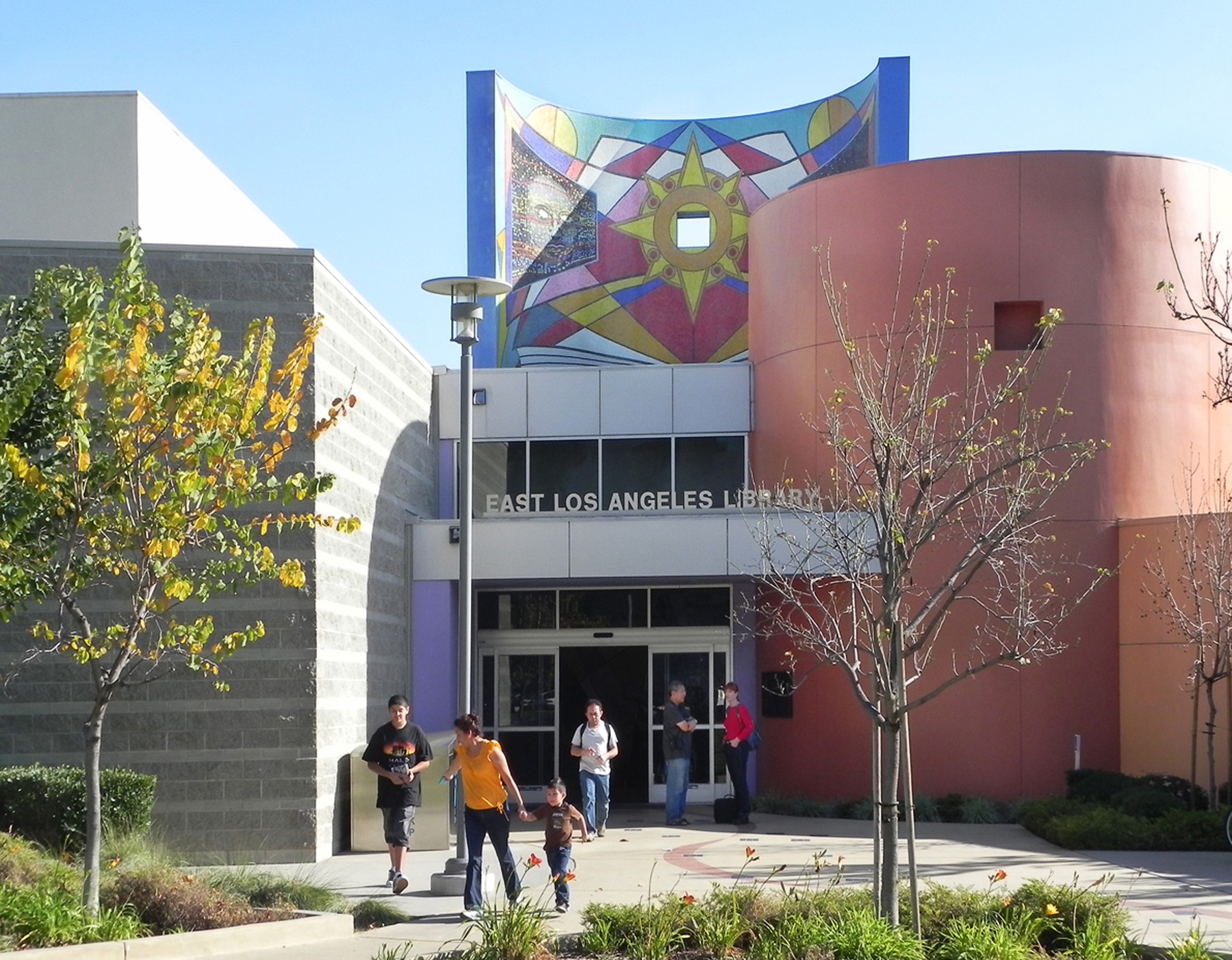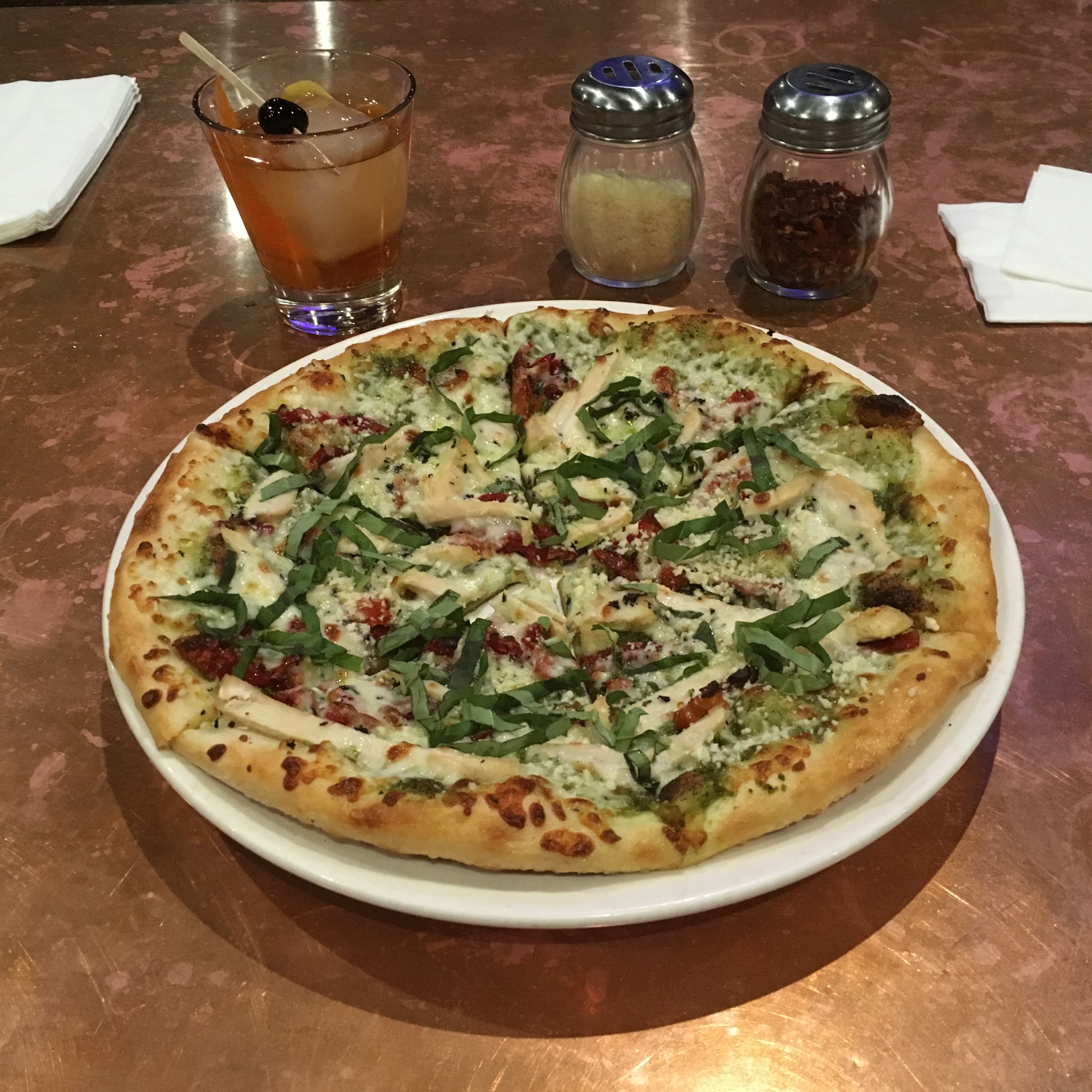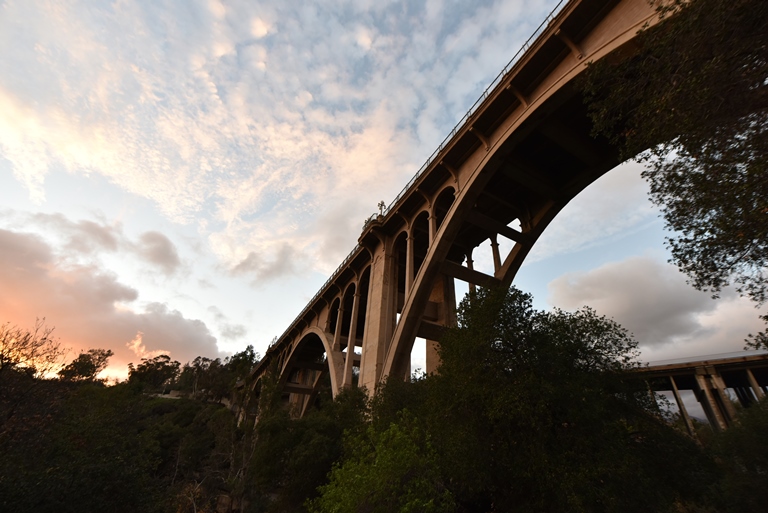
It’s easy to think public art as background noise. It’s natural to dismiss as too peripheral for busy commuters and distracted passerbys to ever stop and take notice. But muralist Jose Antonio Aguirre, who has 35 permanent artworks commissioned in various places (Southern California, Colorado, Illinois, Texas and Mexico), believes that the value of public art is how easily it becomes a part of our everyday lives.
“Maybe in the beginning you’re not paying attention, because you’re rushing, but still, somehow, you get a glimpse of it – and that glimpse makes a mark in your spirit,” Aguirre said.
Aguirre is concerned about accessibility for most people to see and learn about art, which is why he dedicates himself to public art. “Not many people will experience art in a gallery. Not many people will go to a museum. May visit once, but not regular day trips. Not many people go anymore,” Aguirre said. “For me, [public art] is important because people are exposed, everybody is exposed. Especially, if that’s on your regular route. Maybe at first, you’re not paying attention, but eventually you’ll stand by, and you’ll get more curious and that might lead you to see more.”
Aguirre was handpicked by Felix F. Gutierrez to design the Monrovian memorial that will be dedicated to Felix’s father, Felix J., and grandfather, Francisco Gutierrez.
Aguirre initially did not know much about the father-son duo. “It wasn’t until I met him [Felix F.] that I learned a lot about them,” Aguirre said. He was particularly inspired by Felix J.’s activism and dedication as an educator.
“He was aware of the injustice and the segregation that was happening, not just in Monrovia. He understood we really need to get out of this situation. How are we going to do this? Education,” Aguirre said. “I thought it was very important. He really left a mark.”
Born and raised in Mexico City, Aguirre was initially interested in music rather than painting or sculpting. In 1977, he attended the American Conservatory of Music in Chicago to sharpen up his English skills, not yet aware of the future he would have in murals and public art. One day, his class was canceled. With nothing to do, and little money as a struggling student, he noticed the art museum in downtown was free to the public that day. So, he went inside.
“It really blew my mind,” Aguirre said. Aguirre was familiar with Mexican muralists and Mexican colonial artists, but never experienced European art beyond the edges of a magazine. That day, he saw the works of Henri de Toulouse-Lautrec, Vincent Van Gogh, Édouard Manet, Claude Monet, Edgar Degas, Pablo Picasso and Salvador Dali.
Days later, he somehow ended back up at the museum again. “Behind the museum, in that moment, I realized, in reality, my calling was art. And especially, I wanted to do murals,” Aguirre said.
In 1978, Aguirre began attending the Art Institute of Chicago, and he started doing murals. After graduating, his first major work was “Nuestra Esencia, Nuestra Presencia” (Our Essence, Our Presence) at the University of Illinois.
His family’s home in Tlatelolco had been badly damaged when the 1985 Mexico City earthquake hit. Aguirre had been saving money to study abroad in Europe but he sent it all back to his family instead. He entertained the idea of continuing his studies in the United States; so in 1986, Aguirre moved to Los Angeles and attended California Institute of the Arts. California has since become a central place for many of his major works. His first mural in California was commissioned by Knott’s Berry Farm amusement park in Buena Park, Calif., the first time he worked with glass mosaic.
Denise Lugo is an art historian who founded the Latino Museum of History. She got to know Aguirre when she became the director at the museum. She met him through her curator, Margarita Medina – Aguirre’s now wife. Lugo was in awe at his ability to communicate in Spanish.
“He is very proud of his cultural background. He paints other subjects, but his main creative aesthetics is Mexican culture,” Lugo said.

She describes Aguirre’s work as overwhelming. “Monumental is the first thing that comes to mind,” Lugo said. “What is incredible about his work is that it transcends the usual 8-by-10 canvas in which there is a frame. His work is more like an iPhone or a Chinese scroll, in which you move your eyes, and subsequently, you’re awed and inspired by looking at all the information and the detail that’s placed. It’s like being in a theater.”
Lugo explains that even in Aguirre’s smaller pieces, such as the memorial that he will be creating for Monrovia, Aguirre’s art still retains that transcendent feeling. “He wants you to have that sensibility of boundlessness outside frame. It’s like going into a film, and being able to see it. There’s no boundless sense of containing of the work,” Lugo said.
Aguirre considers his mosaic at East Los Angeles Public Library as one of his best. The monument, “Our Legacy: Forever Presente…” consist of two 34-foot by 64-foot mosaic towers and covers 2000 square feet. He said it was the most challenging work because of the space and concave format of the towers.
He was commissioned to create the work in 2004, while he was director of an art program at Wasco State Prison. The program Aguirre oversaw gave inmates the opportunity to learn about art and contribute to public art programs. With permission from the warden and his supervisor, the project would become a part of his work at the prison.
Before he could finish the project, the warden of the prison retired and his supervisor was replaced. His new employers did not want to honor the previous agreements for him to work on the project. Instead of giving up, Aguirre used all his vacation and sick leave time to work on the project.
“This was one of the major opportunities I had as an artist, and I could not let it go,” Aguirre said.

When he completed the project, he resigned from his position at the prison, feeling like he had become more of a correctional officer and less of an art teacher. “At that time, I decided to leave the secure job to concentrate on public art,” Aguirre said.
The Francisco and Felix J. Gutierrez memorial will be placed in front of the Monrovia Historical Museum. It celebrates the two generations of Mexican American heritage but also re-iterates celebrating who we are in the present. Aguirre, who has a son and two daughters, is paralleling the Gutierrez’s legacy through his art.
“He’s an amazing father. He has been able to incorporate in his children this ability to communicate on a cultural level, and to not renounce who they are, but to embrace the future without forgetting their past. Many people forget who they are. He doesn’t. He is there to bring voice. One of the most interesting elements is this idea of the love of ancestors.The idea of filial piety, this idea that ancestors never die,” Lugo said. “For this memorial, it would be [Aguirre] allowing them to speak through him. And who else, but him?”






